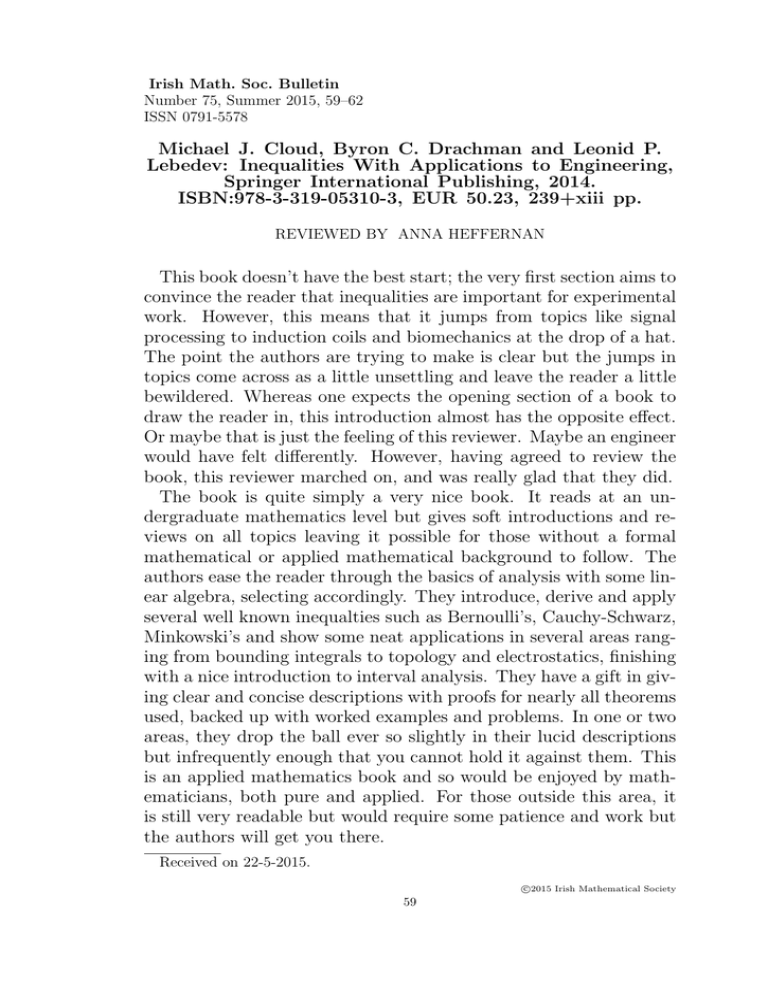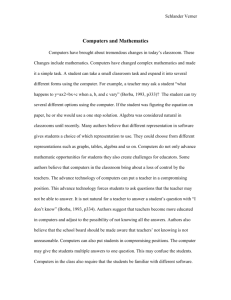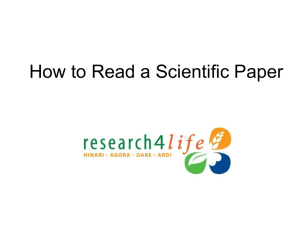Michael J. Cloud, Byron C. Drachman and Leonid P.
advertisement

Irish Math. Soc. Bulletin Number 75, Summer 2015, 59–62 ISSN 0791-5578 Michael J. Cloud, Byron C. Drachman and Leonid P. Lebedev: Inequalities With Applications to Engineering, Springer International Publishing, 2014. ISBN:978-3-319-05310-3, EUR 50.23, 239+xiii pp. REVIEWED BY ANNA HEFFERNAN This book doesn’t have the best start; the very first section aims to convince the reader that inequalities are important for experimental work. However, this means that it jumps from topics like signal processing to induction coils and biomechanics at the drop of a hat. The point the authors are trying to make is clear but the jumps in topics come across as a little unsettling and leave the reader a little bewildered. Whereas one expects the opening section of a book to draw the reader in, this introduction almost has the opposite effect. Or maybe that is just the feeling of this reviewer. Maybe an engineer would have felt differently. However, having agreed to review the book, this reviewer marched on, and was really glad that they did. The book is quite simply a very nice book. It reads at an undergraduate mathematics level but gives soft introductions and reviews on all topics leaving it possible for those without a formal mathematical or applied mathematical background to follow. The authors ease the reader through the basics of analysis with some linear algebra, selecting accordingly. They introduce, derive and apply several well known inequalties such as Bernoulli’s, Cauchy-Schwarz, Minkowski’s and show some neat applications in several areas ranging from bounding integrals to topology and electrostatics, finishing with a nice introduction to interval analysis. They have a gift in giving clear and concise descriptions with proofs for nearly all theorems used, backed up with worked examples and problems. In one or two areas, they drop the ball ever so slightly in their lucid descriptions but infrequently enough that you cannot hold it against them. This is an applied mathematics book and so would be enjoyed by mathematicians, both pure and applied. For those outside this area, it is still very readable but would require some patience and work but the authors will get you there. Received on 22-5-2015. c 2015 Irish Mathematical Society 59 60 ANNA HEFFERNAN This book is divided into seven chapters, six of which range from 16 to 32 pages while chapter five is a whopping 62 pages, leaving you feel this could have been better organised. In the first chapter, the authors bring the reader through a variety of basic inequality theorems. Each is well explained and the chapter proves to be very much self-contained, an undergraduate (or even advanced high school) student should follow the arguments and proofs quite easily. Chapter two runs through the required highlights of basic calculus that could be found in any first year undergraduate honours mathematics course. It leaves one or two theorems without proof, but none that are of a difficult level and/or not easily retrievable with a quick google, e.g., the fundamental theorem of calculus. By the end of chapter two, the reader is not only refreshed with the required calculus but the link to inequalities has been cemented in their mind. Chapter three continues much in the same manner; with very clear descriptions of theorems, proofs and exercises. It follows on nicely from the previous chapters, bringing the reader through several well known inequalities, e.g., Young’s, Cauchy-Schwarz, Chebyshev’s, etc. Also, like previous chapters, there is a wealth of exercises (with hints) to assist you in becoming more comfortable with the subject area. The authors accomplish their goals with clarity and ease. Unfortunately, things waiver slightly with the introduction of chapter four - Inequalities in abstract spaces. Understandably, the authors have to introduce the reader to a lot of mathematical concepts required for functional analysis that most likely would not cross the path of the reader unless they have studied pure or applied mathematics. Not only, are the authors introducing the basic concepts such as linear spaces, spanning bases and linear independence but slightly more complex notions such as inner product and metric spaces as well as operators. Saying that, the authors still present a very good review of the required definitions and theorems, following a ‘need to know’ basis which serves as a nice refresher for those previously familiar with some/most of the theories. Unfortunately with less examples and exercises than previous chapters, if viewing this material for the first time, the reader could easily get bogged down in definitions. Chapter five is where the authors reveal many applications of the earlier mathematics. They bring you through a wide variety of topics and show some neat implications of inequalities. They start BOOK REVIEW 61 with more mathematical topics, like bounding integrals and looking at well known and used functions such as the Gamma or Bessel functions. But quickly move on to more applied areas like signal analysis and dynamical systems. Clearly at this point, the book can no longer be truly self contained; in several areas, formulae are introduced with no derivation, e.g., Euler’s characteristic formula in topology or Poisson’s equation in electrostatics. However, this is completely expected when touching on so many different topics and the authors draw a good line between what is required to illustrate the application and a full derivation of all equations. Chapter six is dedicated to inequalities in differential equations but mainly builds towards an understanding of Ritz’s method. Here the cleanliness and clarity seen in the description of previous problems is lost a little; the authors explain the requirement of material outside the scope of the book, e.g., Sobolev spaces, and cover that part of the material suitable, giving simpler examples. However, the explanations fall slightly short of the clear, concise descriptions of earlier chapters, and there are fewer examples and problems. Chapter seven is the final chapter of the book and ends the book on a nice note. The authors give a brief introduction to interval analysis where they truly ease the reader into the topic. Clear and easy to follow descriptions and examples are given with references to earlier problems solved by other means. In particular, they pick up one or two of the initial problems put forth in the opening section of the book and show how the application of interval analysis eases their solving. Any mathematician would enjoy this book and appreciate its clear, concise descriptions. Non-mathematicians who seek a better understanding behind some of the inequalities or even mathematics that arise in the different subject areas will also benefit greatly from working through the book. It simply is a very nice applied mathematics book. Anna Heffernan is a research fellow in fundamental physics at the European Space Agency. Her PhD from University College Dublin was on the self-force problem, a method applied to the modelling of black hole binary systems. She 62 ANNA HEFFERNAN currently researches classical general relativity including the self-force as well as more experimental aspects such as relativistic positioning systems. Advanced Concepts Team, European Space Agency, European Space Research and Technology Centre (ESTEC), Keplerlaan 1, 2201 AZ Noordwijk, Netherlands E-mail address: anna.heffernan@esa.int



